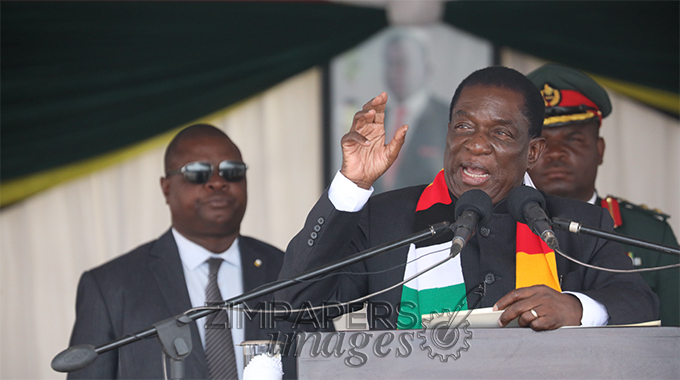Construction of Deka water pipeline 85pc complete

Oliver Kazunga Senior Business Reporter
THE construction of a second 42km water pipeline to connect the Deka High Lift Pump Station to the Hwange Thermal Power Plant is 85 percent complete and on schedule to meet the final completion deadline by the end of next month.
The pipeline project is critical to enhance operationalisation of the Hwange Thermal Power Station which is being boosted with 600MW capacity through the addition of Units 7 and 8 under a US$1,4 billion investment.
This comes as the commissioning of Unit 7 to produce 300MW is expected soon after all tests of the equipment at Hwange, having been successful with the final process of synchronisation of the whole system reportedly underway. Synchronisation entails that the unit would produce its output at the exact required voltage and frequency as the grid and that the phasing of the output matches the phasing on the grid.
Unit 8, which will also generate 300MW is expected to come on line by June this year.
In an update for the fourth quarter of 2022, the Zimbabwe Power Company (ZPC), which is responsible for generating electricity in the country said: “The Deka Upgradation Project is on schedule and 85 percent complete and on course to be completed by March 31, 2023.
“Current works include pipe laying and fitting, construction of the gravel access road along the pipeline and excavation of the pipeline trench.”
The Deka project commenced in October 2021 under a US$48,1 million line of credit extended by India to Zimbabwe.
In the last quarter of 2022, ZPC produced 1 719 gigawatt hours (GWh), falling short of its quarterly goal of 2,490GWh by 30,96 percent due to numerous forced outages while the annual energy sent-out target for 2022 of 9 111GWh was missed by 7,29 percent.
In 2022, Kariba South Power Station was allocated 22,5 billion cubic metres of water by the Zambezi River Authority (ZRA) for power generation which is equivalent to an average capacity of 606MW. However, due to the incessant breakdown of the aged units at the Hwange Power Station and lack of foreign currency to import electricity, Kariba South Power Station used up more water in order to augment low generation at the coal-fired stations.
“This situation led to a reduction of water levels in Lake Kariba which is available for power generation, and necessitated the reduction of the station’s generation by the Zambezi River Authority to an average of 250MW, hence bringing about an increase in load shedding over the period under review.
“Small thermals collectively produced 31,33GWh of energy, falling 55,45 percent short of the quarterly goal of 70,32GWh.
“The thermal stations’ failure to attain scheduled generation levels in the fourth quarter of 2022 was caused by the incessant plant challenges and limited coal supplies which led to a reduction in power generation,” said ZPC.
Hwange Power Station generated an average of three units during the fourth quarter of last year compared to a target of five units as per the 2022 production plan, missing the quarterly energy sent-out target by 34,02 percent. Meanwhile, the Zimbabwe Electricity Transmission and Distribution Company (ZETDC), which is responsible for electricity transmission and distribution, anticipates that the prevailing electricity challenges will ease in the second half of this year until the end of 2024 when generation improves at Kariba Hydropower Station and Hwange.
Kariba is anticipated to improve its generation as dam levels rise to optimum levels between May and June this year.
Live water levels at Kariba Dam have since risen to 8,3 percent as at the 1st of January this year from around 0,66 percent.
The latest development has seen the Zambezi River Authority reviewing the water allocation to ZPC with the hydropower plant now producing 350MW up from an average of 250MW.










Comments